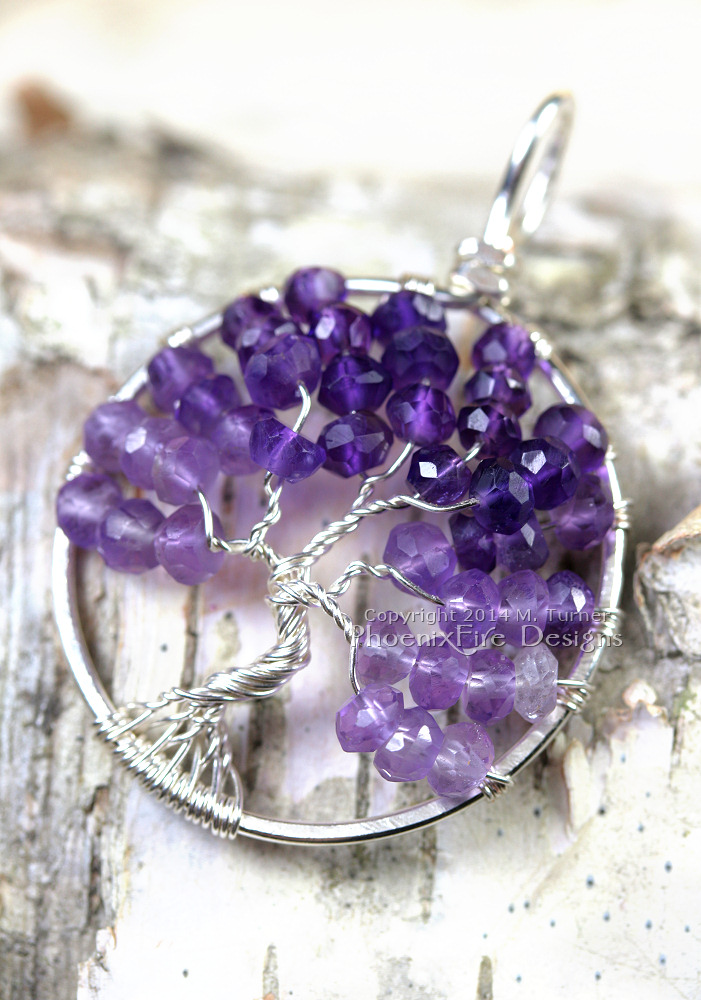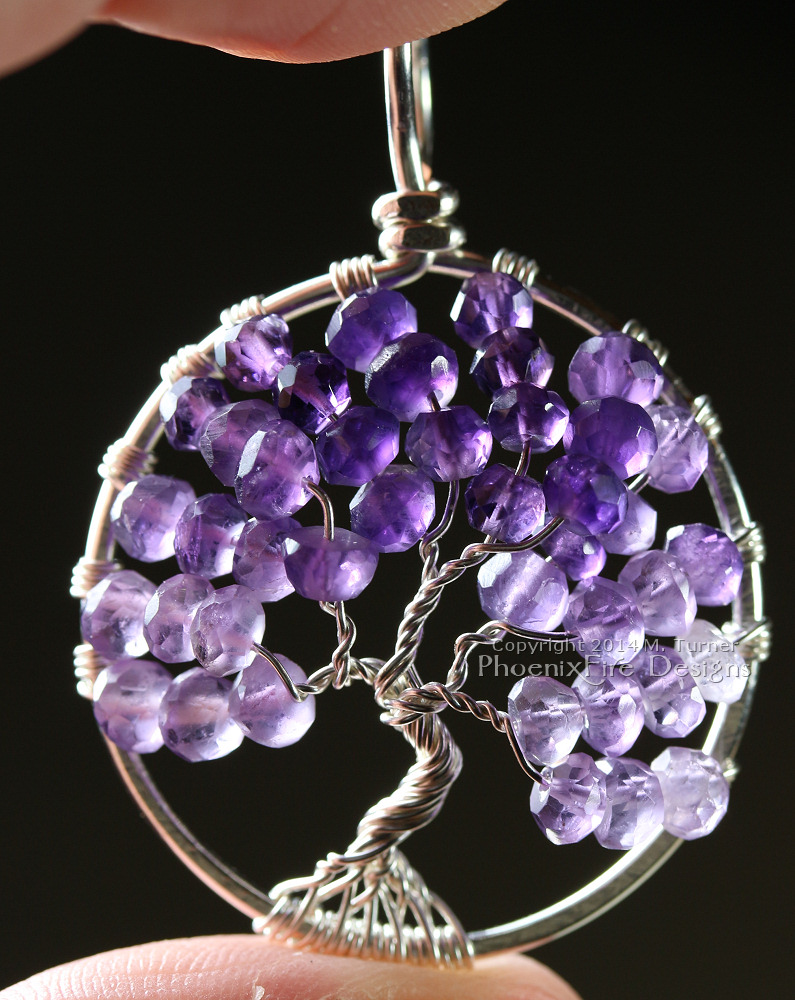Amethyst Tree of Life Pendant
The birthstone of February, amethyst, this tree of life pendant features shaded, ombre amethyst micro-faceted rondelles which have been hand wire wrapped in silver wire a piece of original artisan jewelry. Artfully arranged in a cascading ombre of pale light violet, lilac through to deep and rich, royal purple, these amethyst give the full range of stunning color.
The Tree of Life is a concept that’s been featured in myth, story and legend literally all around the world. Since ancient times, people have used variations on the theme. Connecting all things – the realms of the spirit, the physical, the Divine and the mundane – the roots of the Tree and the branches touch all things and bring them together in harmony.
This pendant is handmade using painstaking wire-wrapping techniques. Hand hammered non-tarnish, sterling silver plated wire frames and encircles the pendant, and is then used as the roots, trunk and branches of the tree.
Amethyst derives it’s name from a Greek word meaning “without drunkenness” because it was believed to protect the wearer from poisons. Amethyst is a semi-precious gemstone and is a very powerful stone being used for insomnia, protection, wisdom and healing. Amethyst is also traditionally associated with royalty and people of great wealth.
A lovely gift for someone who is born in February or who just loves the color of royalty. Amethyst is a gorgeous stone and makes for a striking piece when worn!
Created by Miss M. Turner and available for purchase in the PhoenixFire Designs Etsy Shop Here.
The Tree of Life is known by many names such as the Tree of Knowledge of Good and Evil from the Garden of Eden; Yggdrasil, World Ash Tree, Odin’s Gallows, Thor’s Oak; Axis Mundi, the Navel of the World, the bridge between Heaven and Earth, the Cosmic Tree, Ashwath Vriksha or Banyan Tree, Jian tree, Sacred Fig, Bodhi Tree – all of these are representations of the same theme. From Norse mythology, to Christian, Gnostic, Jewish and Hindu religions and traditions the Tree is also found in sacred texts including the Kabbalah, and dates back to pre-Christian myths of Germanic and other European people. The imagery appears in myths of Russia, Greece, China and more! It’s truly a universal symbol.



